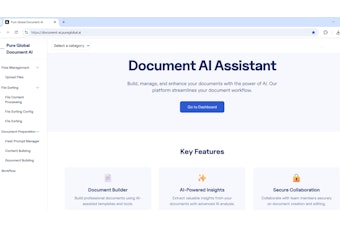
To be honest, I was somewhat surprised when Jay Crowley of the U.S. Food and Drug Administration announced during the UDI Conference in September that the FDA had published the final rules for Unique Device Identification (UDI).
Its publication starts the clock on a host of new requirements designed to identify most medical devices in the U.S. market with the same standard approach. That is expected to result in the reduction of errors made by medical professionals, and also increase the accuracy and efficiency of the supply chain. I’ve become a little jaded about healthcare Automatic Identification and Data Capture (AIDC) deadlines lately and so the fact that one actually happened caught me slightly off-guard. Of course, UDI was due most recently in June, but a three-month delay is tiny compared with those we are used to in the drug supply chain.
UDI is the FDA’s solution to standardizing the product identifiers for all medical devices sold into the U.S. market. Drugs have had that standardization since the National Drug Code (NDC) was mandated back in the early 1970s and the FDA, industry, and patients have benefited from that mandate ever since. FDA’s definition of UDI and its mandate should bring those same benefits to medical devices over the coming years.
But there is an important difference between the approach for assigning the NDC to drugs compared with the approach defined in the new UDI guidance for devices. In the case of the NDC, pharma companies must apply for a “Labeler Code” that is issued to them by the FDA. From there, they can build the full 10-digit NDC for each drug product they submit for approval. This approach was defined around 1972 and is still with use today.
For UDI, device manufacturers must first obtain something like a “Labeler Code” from one of the FDA-accredited “number issuing agencies” (these currently include HIBCC, GS1, and the ICCBBA). Each agency has its own term for this code but it uniquely identifies the applicant company just like the old FDA “Labeler Code”. From this company identifier code, the device manufacturer would build their full UDI code for each product following the rules defined by the issuing agency. Because these UDI codes are not issued or administered by the FDA, it is the responsibility of the device manufacturer to register them with the FDA through a new database known as the Global Unique Device Identification Database (GUDID).
What does this have to do with the NDC? There is a limit to the number of NDC “Labeler Codes” that the FDA can issue. Once that limit is reached, the NDC system will fail. At some point before this happens, the FDA must define a new numbering system for drugs to replace the antiquated NDC system.
As most readers are aware, drug manufacturers are facing new serialization mandates in the U.S. over the next two to four years. The FDA will be required to define standards for track and trace soon. Today, serialization in the U.S. is based on the NDC system, but if that system will break at some point over the next 10 years, before focusing on the definition of track-and-trace standards, the FDA should explain how it will address the switch to a new numbering system for drugs. Switching to that new numbering system will likely need to happen before or during the transition to the new serialization requirements.
My prediction is that the FDA will follow the approach that the UDI numbering system takes. That is, instead of obtaining a “Labeler Code” from the FDA, new applicants will be required to obtain a code from one of several accredited issuing agencies and then simply register those codes with the FDA. In this way they could grandfather all, or most, existing “Labeler Codes” and the NDCs that are based on them, making the transition to the new system very graceful.
Watch for that to happen in the next few years.
Dirk Rodgers, who contributed to Healthcare Packaging’s Pharmaceutical Serialization Playbook, is an independent consultant and founder of RxTrace. He has contributed to many industry groups that have been formed over the last 10 years to investigate solutions to the problem of counterfeit and other illegitimate drugs in the legitimate supply chain. He served as co-chair of a number of key technical work groups in GS1 and GS1 US. These include the original GS1 EPCglobal Drug Pedigree Messaging work group that created the DPMS pedigree standard, the Network Centric ePedigree (NCeP) work group, and the RFID Barcode Interoperability Guideline work group. Rodgers holds a BS in Electrical and Computer Engineering from the University of Wisconsin-Madison. "RxTrace" is copyrighted by Dirk Rodgers Consulting, LLC—all right reserved.





















